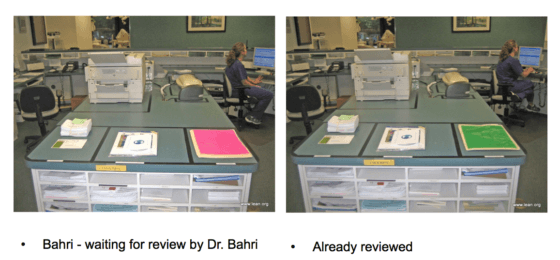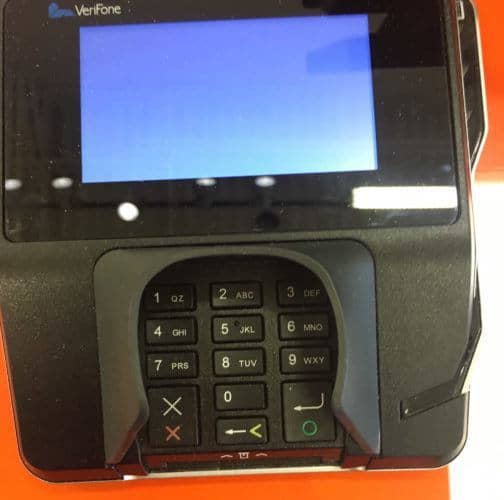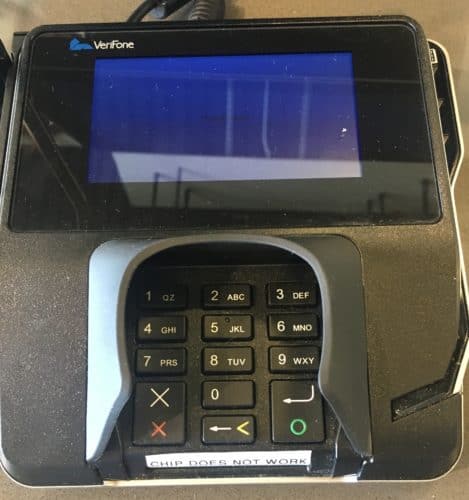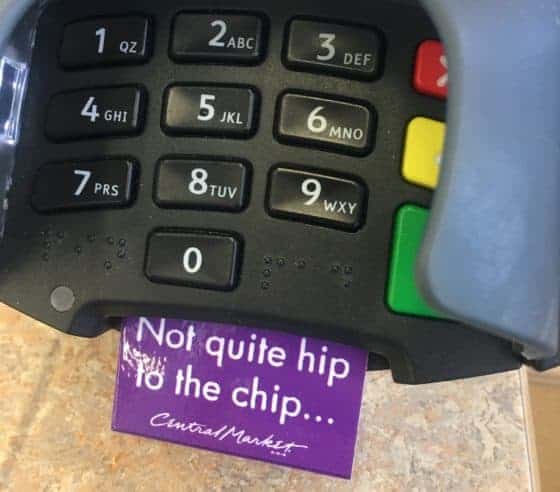Gwendolyn Galsworth is a leading thinker and author on Lean and various aspects of “visuality.” You can listen to my podcasts with her (and we realize it's tough to discuss visual things in an auditory format).
One thing she talks about in the workplace is “information deficits.” You can tell there's a deficit when people are confused, such as people asking things out loud such as:
- “Where do I line up to order food at this restaurant?”
- “What groups are they boarding now?”
- “Have those specimens been loaded into the analyzer yet?”
- “Have those records laying there been reviewed by the dentist yet?”
When we have proper “visual indicators” or “visual controls” in place, those questions get answered and there's less need for interruption, confusion, or delays in flow.
Those four deficits can be solved by:
- Clear signage and/or ropes
- Clear visual signs that say in BIG LETTERS what groups are currently boarding (American Airlines does this badly, Southwest does it better)
- 5S tape outlines and color coding that show tubes in that red rack haven't been loaded yet, those in the green rack have been (although we have to be careful with color coding due to color blindness)
- Visual indicators used by Dr. Sami Bahri in his office that make clear what he needs to review and what has been reviewed, as shown below.
In Sami's office (listen to my podcasts with him), there's a visual indicator, but it's not “error proofed.” It's possible that somebody leaves the pink or green card with the wrong side up (making the visual indicator inaccurate at the moment).
As I've blogged about before, “visual indicators” are different than “visual management.” Visual indicators eliminate information deficits. Visual management allows us to, “See the difference between normal and abnormal… right now!” as Toyota people say. Not all signs are “visual management.” They might be just “visuals.”
Lines in the parking lot are visual indicators.
It's visual “management” if somebody comes and tickets or tows the cars that park badly, I guess.
Visual indicators tell the patient where to go check in. Visual management helps us see if too many people are waiting in line (and it's “management” because we're making decisions based on the visually apparent abnormal condition — unless lots of patients waiting is normal, which is sort of sad).
Credit Card Terminals
Lately, as the US credit card industry is converting from magnetic stripes to “chip” cards, there's a lot of confusion out there at retailers. Let's ignore the issue of why we don't have “chip and PIN” cards like Canada and Europe… I think the PIN is a better error proofing against fraud compared to a signature, but oh well).
Many credit card terminals are the “new” variety that have both a magnetic stripe reader and a chip slot, like this:
I always have to ask, “Swipe or chip?” I usually guess wrong if I don't ask, based on the last store and I went to and whether they had the chip slot activated or not.
The local Whole Foods store has a reader with a visual indicator, or label:
“CHIP DOES NOT WORK” is a helpful label. I don't have to ask the store employee, so it doesn't interrupt them and the checkout process is slightly faster.
But, it's not error proofed… if somebody is in the habit of paying with a chip card, they might ignore the label (which is always the risk with a sign or visual indicator).
I usually shop at Central Market, a Texas chain of Whole Foods type stores that I generally like better for a number of reasons.
Here is their terminal:
They've inserted that purple card… it's not just a label, but it PREVENTS you from inserting a card into the chip reader slot.
Update: This store now accepts chip cards, so the “not quite” part was accurate… and the purple cards are gone.
That's probably the best approach to this.
Visual indicators can be helpful… but we often need visual management where we REACT to abnormal situations… better yet is error proofing to prevent mistakes from happening.
What do you see out there with credit card readers? How many are not labeled? How many are error proofed? Post comments and post pictures, even, if you have a way. Tweeting a photo makes it easy for you or me to embed that in a comment.
It also makes me wonder about employee engagement, creativity, empowerment and continuous improvement. It raises a lot of questions:
If a store employee is answering the question of “swipe or chip?” all day long, at what point do they wonder if there's a better way?
Do they point out the problem to a manager?
Do they make a suggestion about a label or an insert?
Does the boss listen to them?
Are they allowed to try something?
If one cashier or store creates this, do they share the idea with others?
What would happen in your workplace?
Please scroll down (or click) to post a comment. Connect with me on LinkedIn.
If you’re working to build a culture where people feel safe to speak up, solve problems, and improve every day, I’d be glad to help. Let’s talk about how to strengthen Psychological Safety and Continuous Improvement in your organization.













Great real-life example of low-cost error-proofing to simplify decisions. It doesn’t take much more than a plastic insert to prevent a mistake that probably happens millions of times a day across the US. If we can encourage people to think at that level of simplicity to prevent waste in their work, we can focus more on growth and opportunity and less on putting out fires.
A good example of visual indicators and error proofing at Panera Bread:
[…] See the top of this post for info about how you can “Tweet to Win” a chance to get a free copy of my newly […]
My local post office has a visual indicator:
Here’s an airport store that taped a bag hanger over the slot… a bit hard to see, but it mistake proofs against inserting the chip (I added the rocket ship as a pointer arrow):
Also see this article from the WSJ, which includes photos of mistake proofing like I did, without them using that Lean term:
Chip Card Nightmares? Help Is on the Way
Another one from a local store:
Comments are closed.